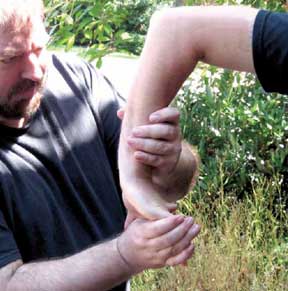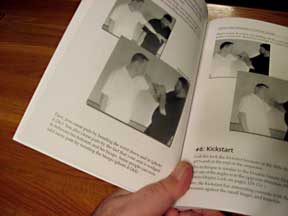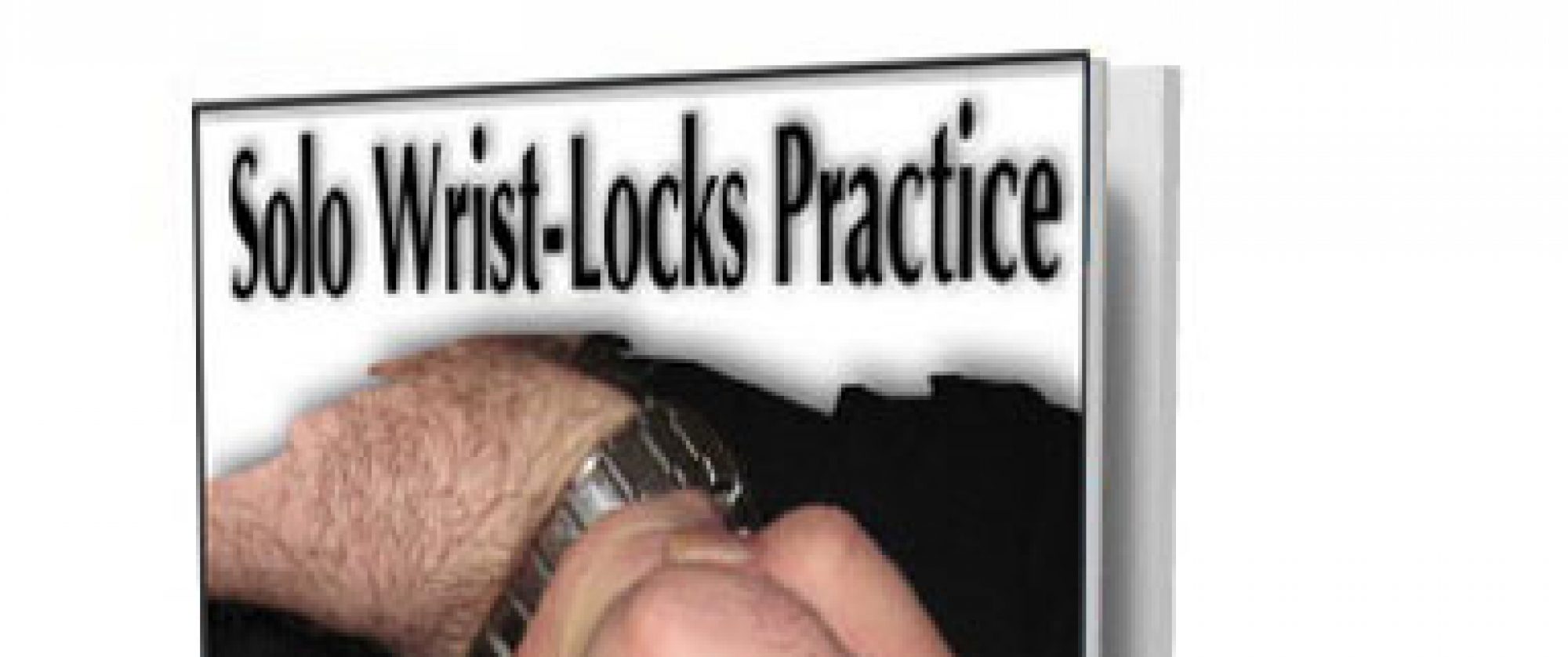[headline_tahoma_medium_left color=”#000000″]Weird and Unusual Joint Locks[/headline_tahoma_medium_left]
Why would a martial artist want to control with the really weird locks?
Don’t some of those wrist and joint locks seem all but useless? How could you use those in a real fight?
Are these lesser-known controls only good for removing a grab to your body?
In the book, Wrist Locks: From Protecting Yourself to becoming an Expert (revised), there’s a chapter that teaches you a 12-13 specific locks.
So, why did I want you to learn those particular locks?
Readers of Wrist Locks can understand some of my decisions:
• Readers practice all of the variations on the Basic Lock
• They find practical uses for revving the motorcycle
• They see how Step-Throughs fit into actual scenarios
• And they could even see themselves performing a nose control …
But how in the world can you make a Double Ninety or “The Weird Lock With No Name” practical?
[headline_tahoma_medium_left color=”#000000″]Especially “The Weird Lock With No Name!”[/headline_tahoma_medium_left]
One of the reasons I teach you these particular locks is that they present some very important principles for successful joint locking.
You learn just by practicing those particular locks. If you experiment with these controls enough, you will learn to generalize these concepts to other locks and controls that you may have to use for real self-defense.
It almost happens automatically.
Still, you ask, “Keith, why did you include some of those more bizarre locks?”
Some of these locks have very specific uses, meaning they don’t generalize well to different situations.
But they are perfect if you use them in their particular niches.
And you can learn by example. If these locks fit into particular places, are there other locks that could make your fighting more efficient, if placed in the right spot?
Here’s what I am talking about. Let’s take The Weird Lock With No Name as an example (pictured in the book photo towards the end of this article).
Why would you ever want one of your hands on the inside of your opponent on his or her biceps, while your other hand bends the opponent’s wrist in a control?
Could there really be a situation where this is useful?
Here are just a few possible scenarios for The Weird Lock With No Name:
You are against an opponent, and you’re standing to the side of him. You have his arm outstretched and your other hand is snaked around the back of his neck.
With a little pressure you will bend him over — maybe into a throw — maybe drop him down, flowing into another control…
But this guy resists your pressure. He has one mighty neck. He could have played the part of The Hulk.
Not only does he resist bending his neck, but he actually bends his arm in, not allowing you to ‘straight arm’ him.
What do you do?
You allow him to bend his arm and keep his neck upright, because his resistance, pardon the reference the The Borg in Star Trek, is futile.
Resistance is futile, because if The Hulk resists, he will pull you right into The Weird Lock With No Name.
It’s that simple.
In scenario number two, you want to put an arm bar on your opponent, but you find your arm is on the inside of her guard.
Do you take the time to pull your hand free?
[features_box_blue width=”75%” + border=”2px”]
Not a bad idea, if you trap the arm that’s in the way as you pull yours free. Also, only pull it as far back as needed to barely clear the obstruction. No cradling your fist back at your side.
[/features_box_blue]
Your hand can’t move forward — otherwise the efficient fighter in you would have already been hitting, right?
So, what do you do?
You move your hand in a direction where you don’t feel resistance. And bingo …
That direction just happens to be on her biceps. BAM — you have a chance to use The Weird Lock With No Name again.
Hmmm — Maybe this lock has more uses than previously imagined.
In fact, without brainstorming any more scenarios, you are able to generalize this lock to a principle:
When you have your arm on the inside of your opponent’s, and it is either right to left or left hand to right hand, you can do The Weird Lock With No Name — as long as you can put your hand on your opponent’s biceps without resistance.
Whew — that was a mouthful.
But I have something concrete to practice.
I can invent situations where my hand ends up on the inside. I can practice as many variations as I can think up.
And someday, if I ever feel that familiar feeling, that would make others panic, I can easily move just a few inches into an efficient lock.
The trick now, is to make all of this automatic. Any time, I feel my hand (fist) being trapped on the inside of my enemy’s arm, I want to bend his forearm directly into that weird lock.
[headline_tahoma_medium_left color=”#000000″]Last Thoughts on These Strange Locks[/headline_tahoma_medium_left]
You don’t have to own Wrist Locks or know The Weird Lock With No Name, to incorporate this principle.
 If you do already own the book, you’ll find The Weird Lock With No Name on pages 77-79 of the revised soft-cover edition.
If you do already own the book, you’ll find The Weird Lock With No Name on pages 77-79 of the revised soft-cover edition.
But as I said, you don’t need the book or that particular lock, to make this article worthwhile to you.
Pick any strange lock that you already know.
Put the lock on your partner.
Now back up one step. Ok, rewind two steps. Go back to where your hand is making ‘first contact’ (A Star Trek reference again?) with your partner in preparation for the lock.
Now, freeze action, right there.
Examine both of your positions — hand positions and body positions. Look at everything. On both you and your partner.
Now, the question becomes:
How many ways can you find to get to that unusual-lock position in a fight.
‘All roads lead to Rome‘ — and several of your hand encounters could lead to one particular joint lock.
If you do this with all of your ‘weird’ locks, you could really enhance your martial arts skills.
and/or Barnes & Noble’s NOOK






